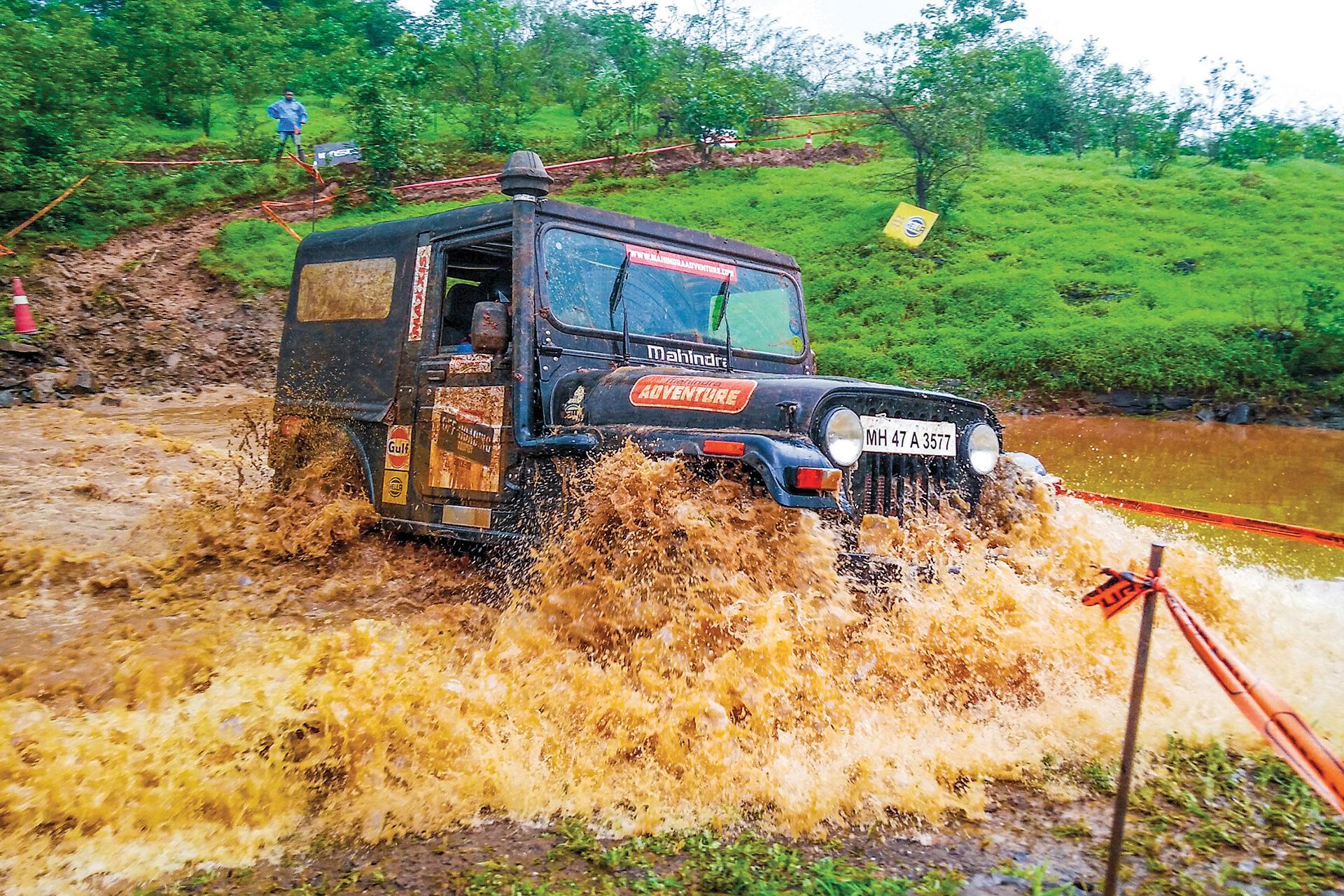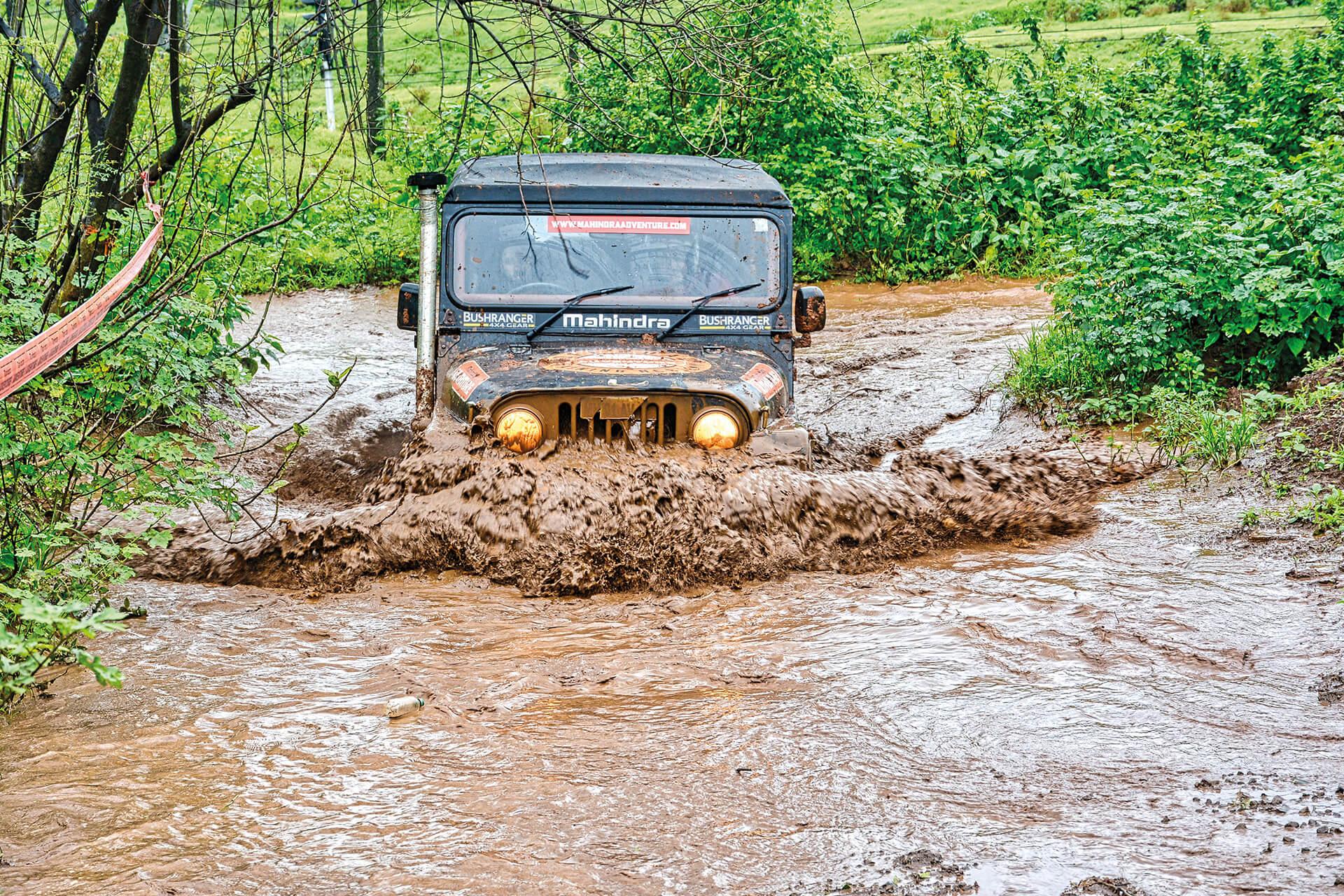Yet it is best avoided if possible. If and when done, that occasional water over the bonnet won’t hurt you if the snorkel is professionally made and installed.
Deep water crossings: Snorkel joints must be air and water tight before undertaking deep water crossings.
What kind of snorkel should one choose?
If you do a lot of competitive off-roading drives that involve body damage, it’s best to avoid a fibre snorkel. If not well engineered, they are prone to breakages. This learning came out of our Lonavala Great Escape wherein my Thar slid into another Thar on a super slick surface in slow motion and my snorkel broke. Another time, when we were on the thick, narrow jungle trails of Vagamon, a branch hit the neck of the fibre snorkel, breaking it into pieces. This made us shift to proper stainless steel snorkels for our Great Escape (GE) fleet later. Despite that, I would also advise people to install branch deflectors to avoid unseen branch hits that can crack/bend the body of a snorkel. For applications in the desert and/or on dusty, wide open trails, a fibre one would just work fine.
How high should a snorkel be?
I seldom understand the reasoning behind placing the snorkel head just a couple of inches higher than the roof of their 4WD. It’s unlikely that the vehicle would keep going when the driver himself is submerged inside the cabin under a couple of feet of water. A snorkel head should ideally be placed slightly above the height of the driver and not above the roof of the vehicle. This experience also comes out of our Mahindra Adventure Great Escape off-road events, wherein we have lost a couple of snorkel heads that were placed above the roof line of our recovery Thars. How? Courtesy low hanging tree branch hits as drivers often misjudge the overall height of the vehicle. Do return them in case you still find them under a thick canopy of jungle trails at Sakleshpura.
What is the ideal location of the snorkel on the body work?
An automotive high intake snorkel is more than a simple pipe extension all the way to the roof line. It must be designed and installed properly to avoid being a potential hazard to the engine. I have seen some home installations where there are either too many bends, the pipe is too thin or thick and is not water or air tight. The whole purpose of a snorkel is defeated in such a case. When too thick and placed over the A pillar, it could lead to a potential blind spot resulting in an accident. Too thin and too many bends along the route could starve the engine leading to excessive fuel consumption and even power loss.
Ideally, a good snorkel should have the following qualities:
Should be able to take punishment and shouldn’t break/warp at the slightest hits or at extreme temperatures.
It shouldn’t extend out of the original body work of your SUV to prevent damage.
Engine should rev and breathe freely as it did prior to installation. There shouldn’t be an effect on fuel consumption and filter indicator should never show clogged status after installation.
Opt for a snorkel that has been specifically made for your SUV. One size doesn’t fit all. Go for genuine accessories if available.
Choose your air intake snorkel company and installer wisely. This involves drilling of holes on the bodywork. A professional installer would go a long way in ensuring longevity of the body and effectiveness of the snorkel. A good snorkel installation shouldn’t increase your blind spot.
This brings us to a question – if a snorkel has so many advantages then why don't manufacturers give them as a standard fitment? The answer is simple. Here we are talking about specialised equipment for a specialised application. Most of the Mahindra SUVs already feature very high air intake system in terms of wading depth, keeping safe user application and environment under consideration. The Thar 2020 features a high wading depth of 650mm. A snorkel is a good addition only if pushing boundaries is the goal.









